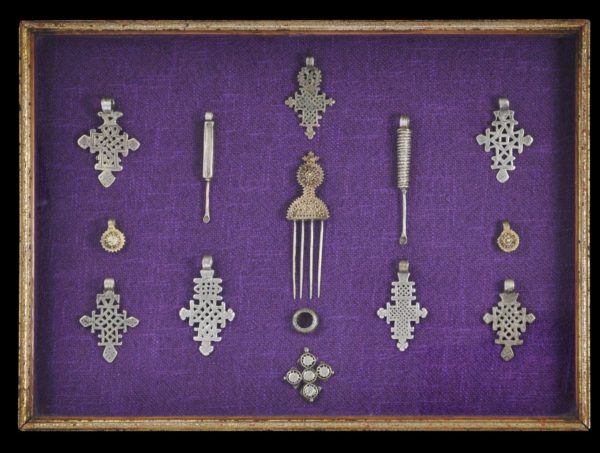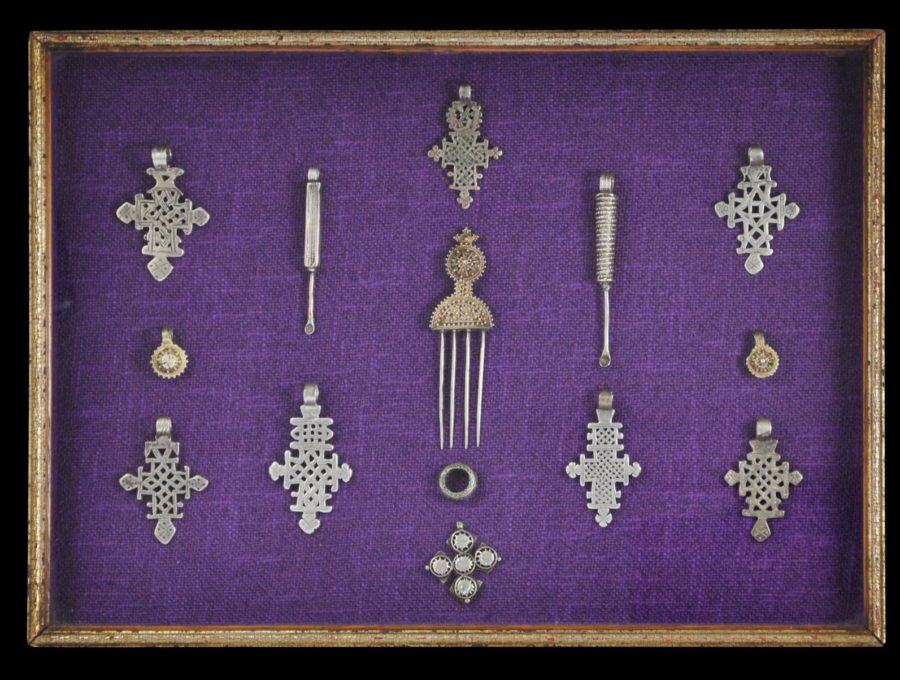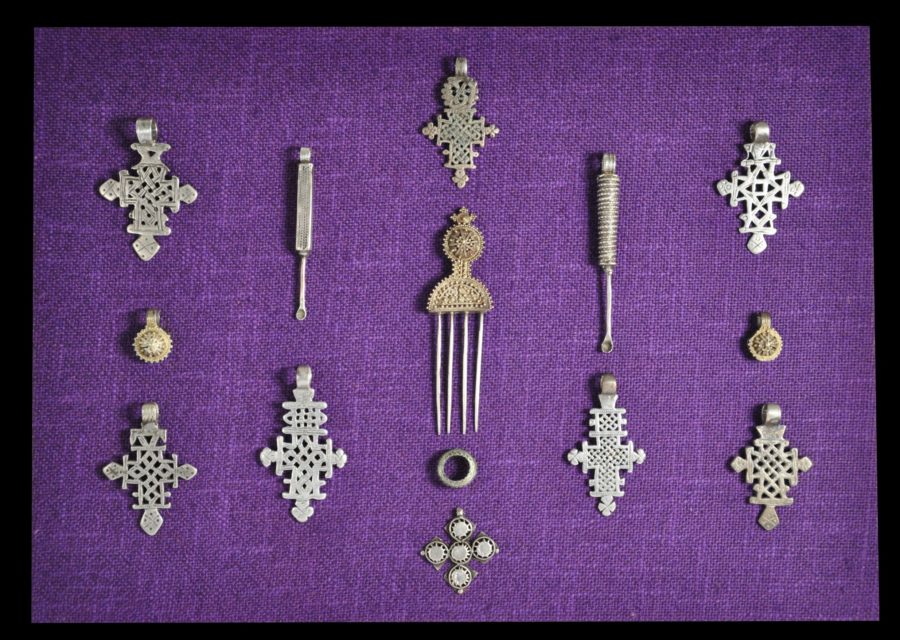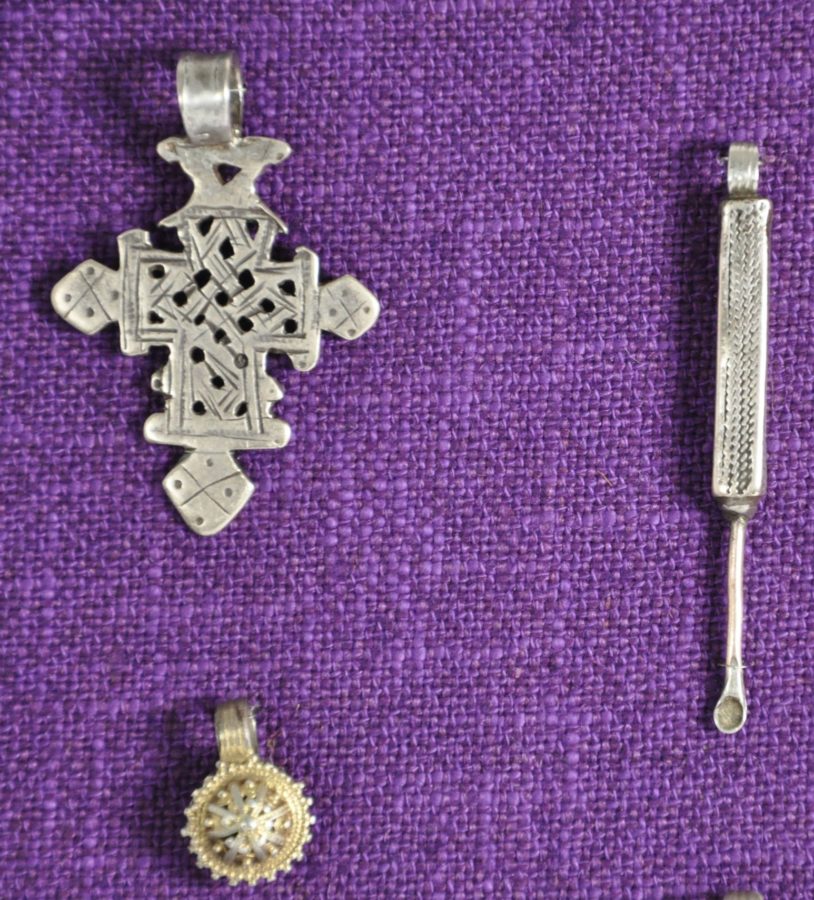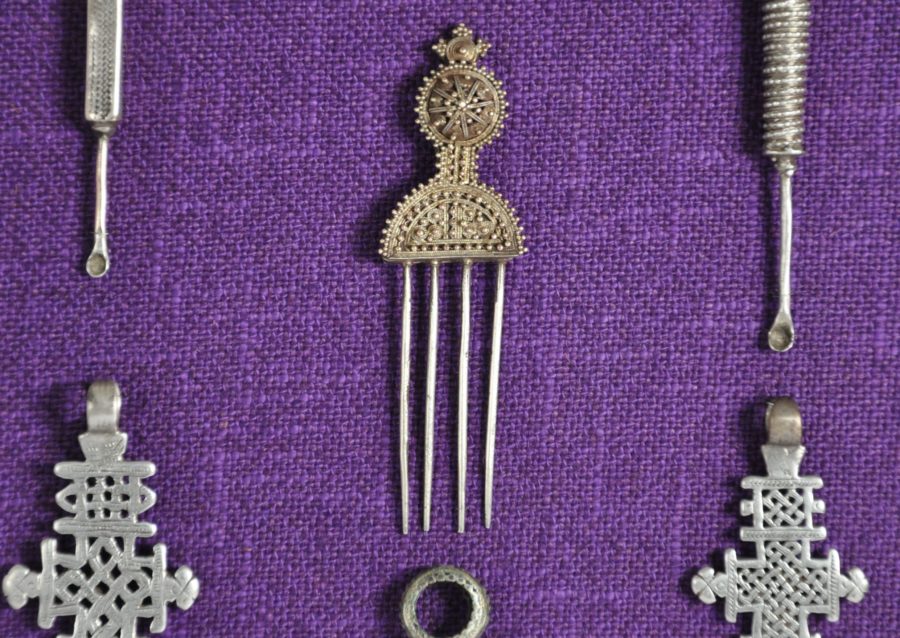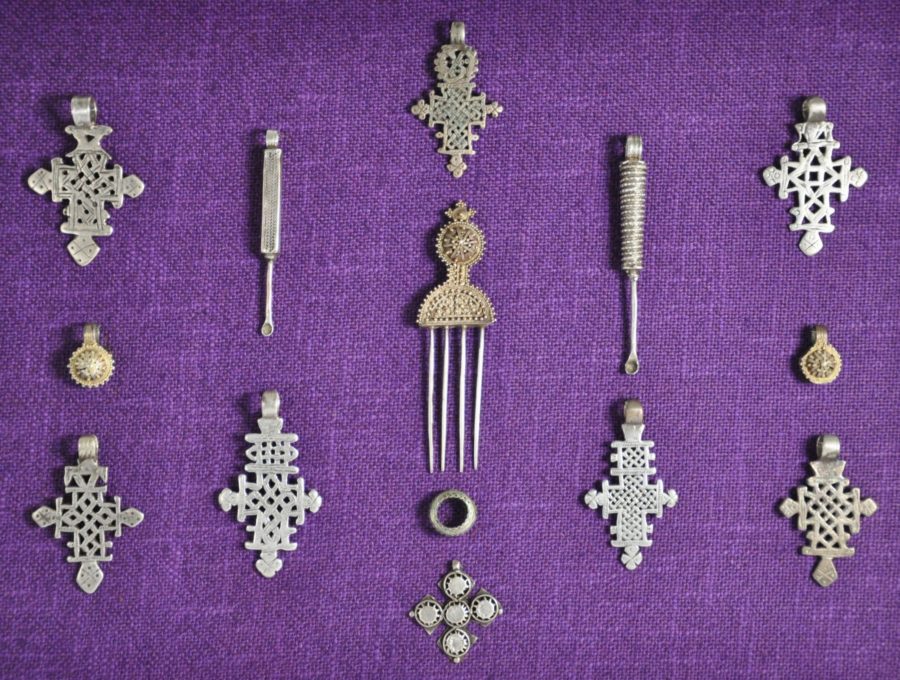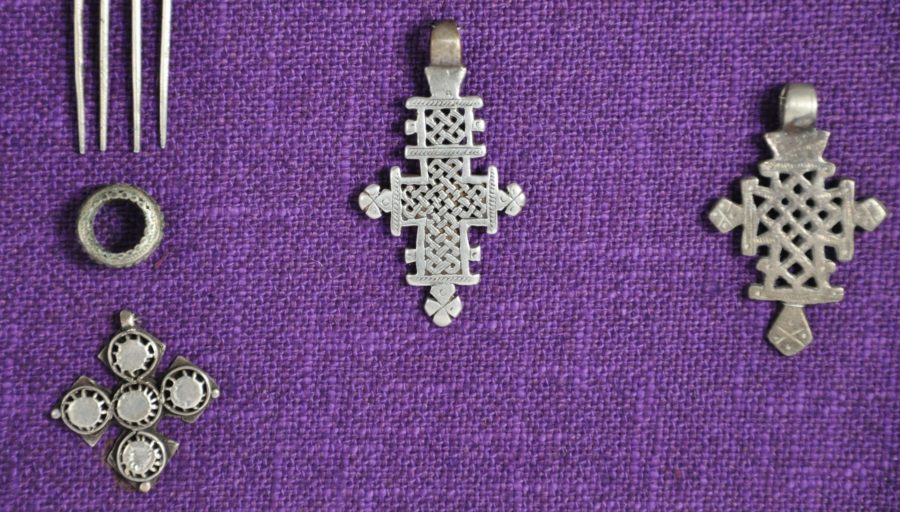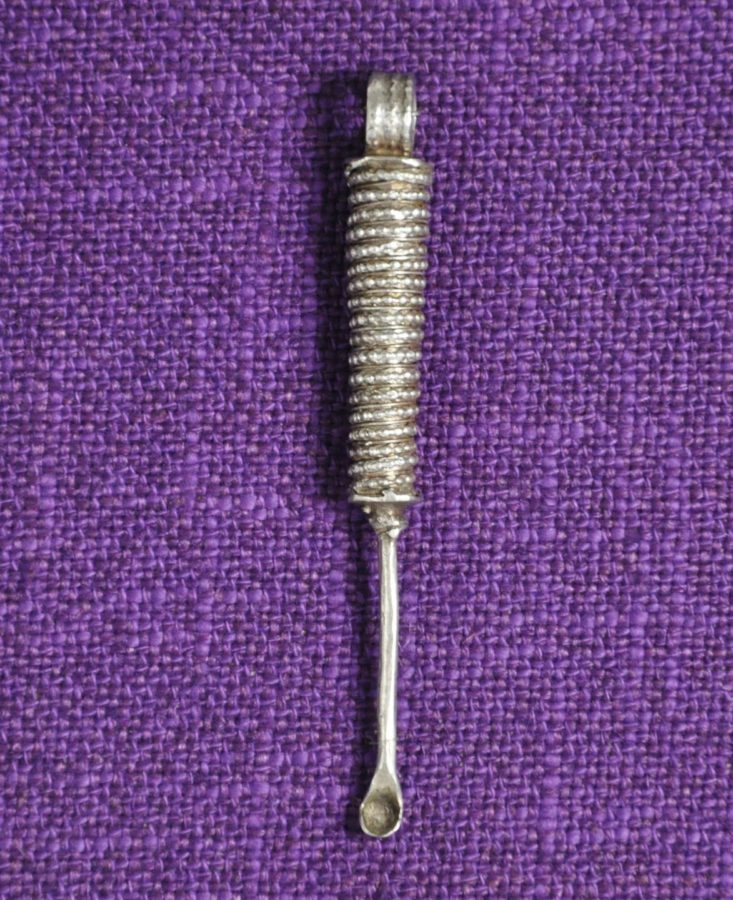This very attractive set of Ethiopian silver jewellery items is presented beneath glass, and against a purple textile ground in an aged gold frame.
There are fourteen separate pieces in all, each secured to the back of the frame with non-invasive, fine wire. Each piece shows significant age and wear. Silver suspension loops fitted to the tops of pendants and so on particularly show much age are use-related wear.
The items are arranged around a central gilded silver hair comb (mido) of four prongs and an upper section decorated with extremely fine applied granulation and filigree work. The work suggests origins in either Eritrea or Tigray. It is about 9.4cm long. van Roode (2017, p. 87) says that such a haircomb has changed little in style over the centuries and would be recognisable to the early translators of the Bible. Such hairpins now are somewhat rare and eagerly sought after.
Included are seven silver crosses (yangat masqal). Each is pierced and was designed to be worn on a chain around the neck.
These were worn by Christian groups in Ethiopia particularly in Tigray and Wollo provinces as a sign of their faith. It is believed that certain styles relate to particular churches, with their being regional variation. Particular saints were venerated at specific churches, so pilgrims might travel to certain churches to seek the aid of particular saints. They might buy or commission a cross in the local style as a keepsake of their pilgrimage. Thus, the one individual might have several different types of crosses as a memento of his or her visits to various churches and locations.
Related examples in the Volkerkundemuseum of the University of Zurich are illustrated in Biasio (2004, p. 222). Other similar examples are illustrated in Leurquin (2003, p. 110).
Also included are two silver ear picks (kuk mawca) or scoops. These were also used to clean tobacco pipes, and were worn suspended from the neck, pendant-like.
See Seiwert (2009, p. 109), Ginzberg (2000, p. 254) and Biasio (2004, p, 223) for similar published examples.
Overall, this is a fine and well preserved collection attractively framed.
References
Biasio, E., Majesty and Magnificence at the Court of Menelik: Alfred Ilg’s Ethiopia around 1900, Verlag Nueue Zurcher Zeitung, 2004.
Ginzberg, M., African Forms, Skira, 2000.
Leurquin, A., A World of Necklaces: Africa, Asia, Oceania, America from the Ghysels Collection, Skira, 2003.
van Roode, S., Desert Silver: Understanding Traditional Jewellery from the Middle East and North Africa, BLKVLD, 2017.
Seiwert, W.D., Jewellery from the Orient: Treasures from the Bir Collection, Arnoldsche Art Publishers, 2009.


